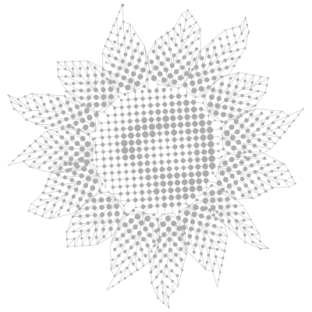Phosphorus control – different path, various results
Studies have shown a gradual improvement in the effectiveness of methods for assessing the state of phosphorus in the soil and the effectiveness of the use of phosphate fertilizers. This article will explain the behavior of phosphorus in the soil.
DYNAMICS of phosphorus in the soil
Plant roots absorb phosphorus in two forms. Monophosphate ion (PO43-), which is the predominant type of phosphate in the soil solution at soil pH below 7. At pH above 7, the predominant form is diphosphate ion (P2O74-). Both forms are also called orthophosphates (ortho-`refers to 4 oxygen atoms). Phosphorus-containing anions (negatively charged ions) attract cations (positively charged ions) of calcium in alkaline soils, as well as iron, manganese and aluminum in acidic soils. Phosphate ions bind to other ions and form more stable compounds that cannot dissolve in the soil environment. The presence of these phosphate-binding ions (Ca, Fe, Mn, Al) depends primarily on the pH value. The concentration of these cations determine the presence of phosphorus in the plant.
The presence of mobile phosphorus in the soil is directly related to solubility (ability to dissolve in the soil solution) characteristic of various types of phosphorus-containing molecules. The plant transports phosphate ions from the soil solution into its cells; the amount of phosphorus intake depends on its solubility coefficient in the soil solution. The rate of replenishment of phosphorus in soil solution depends on the solubility of phosphates.
In alkaline soils, the solubility of phosphorus depends on the amount of calcium in it. Calcium is a major element in alkaline soils and reacts with HPO42- in the form of calcium phosphate (CaP2O7). Calcium phosphate in an alkaline medium has a low solubility, thus, it is not enough to form a crop. Cultures absorb HPO42- from the soil solution, another part of HPO42- goes into calcium phosphate. After analyzing the soil solution, it is possible to effectively assess the presence of available phosphorus in alkaline soils.
In acidic soils, one of the soluble compounds of calcium phosphate, the most affordable is calcium monophosphate. However, iron, aluminum and manganese ions also dissolve in acidic soils. When iron and aluminum dissolve, they combine with phosphate ions, making them inaccessible; this process, when the soil pH is below 5.5, increases even more when the soil pH is below 5.0. Therefore, the ideal pH for the presence of phosphorus is from 5.6 to 7.2.
Although the solubility of phosphorus is reduced in alkaline soils, it still remains available for crops, but in smaller quantities. As a result, the total amount of phosphorus contained in alkaline soils should be greater than in acidic soil. However, both types have the same phosphorus potential. Phosphorus is determined in all types of soil: in alkaline, neutral and acidic soils, although the methods of extraction and calibration will be different. It is recommended to justify the rate of phosphate fertilizers by first making an analysis of phosphorus in the soil, depending on its acidity. The presence of phosphorus can be determined by the extraction method using evaluation tables.
As is known, the zero treatment system increases the population of soil microorganisms, including mycorrhiza fungi. Mycorrhizal fungi can form symbiosis with the roots of many plant species and are often important for transporting phosphorus in the root. Also near the fungal mycelium, they are able to absorb phosphorus from a non-root surface. In some cases, the mycelial filaments can penetrate the volume of the soil, which is ten times larger than the roots themselves. Mycorrhizal populations can increase the presence of phosphorus for some crops when the level of soil phosphorus is low (less than 10-15 mg / kg using BrayP-1, Mehlich P-3 and Olsen)
Write to us
and we will find an opportunity
for cooperation


